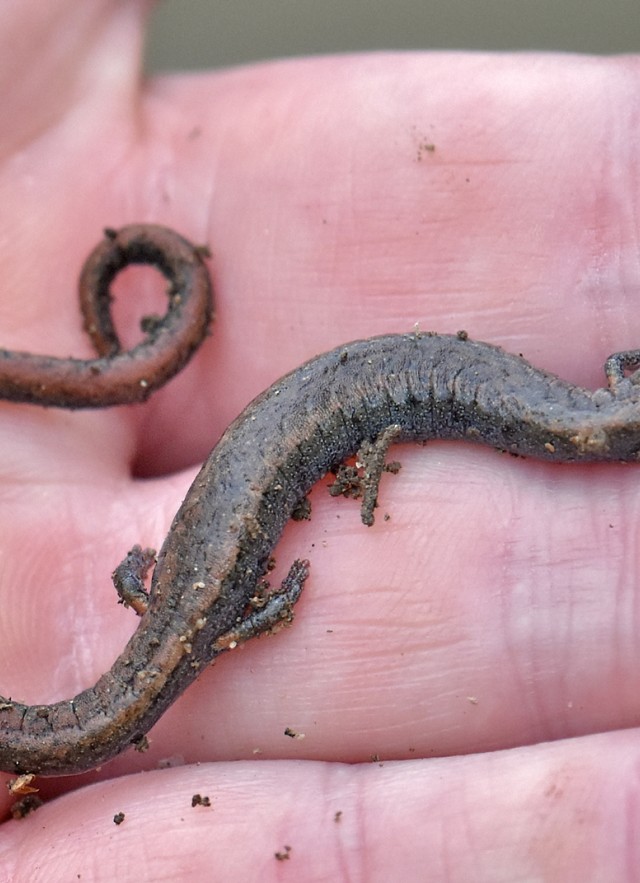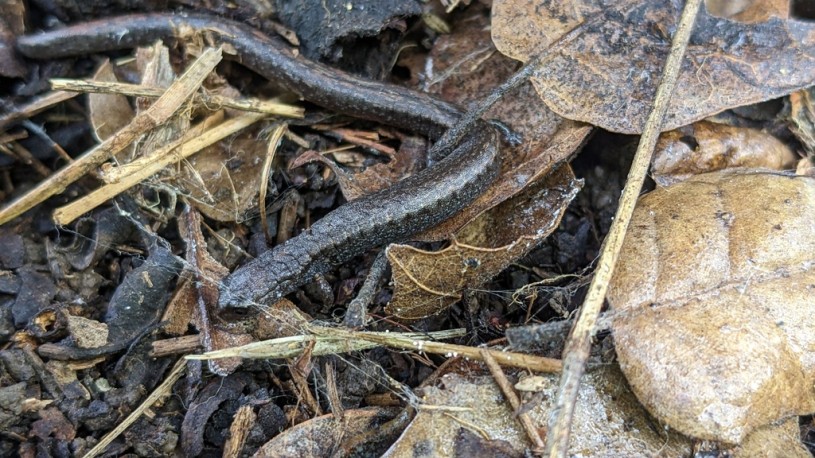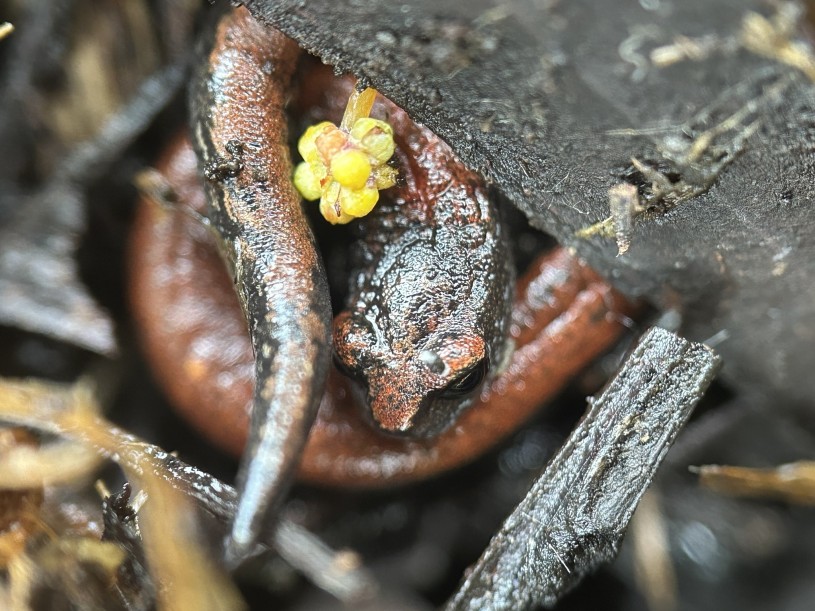BE ADVISED: On Saturday 9/6, the Los Angeles Memorial Coliseum will host the USC vs. Georgia Southern football game. Kickoff is at 4:30 pm. This event will impact traffic, parking, and wayfinding in the area due to street closures. Please consider riding the Metro E (Expo) Line and exiting at USC/Expo station.
California Showers Bring Salamanders: Please Help us Find Them
Join us in some community science research to help us study salamanders across the L.A. area!

It’s finally rained in Los Angeles, and that means salamanders! Please join us in some community science research to help us study salamanders across the L.A. area!

Both the garden slender salamander (Batrachoseps major) and the black-bellied slender salamander (Batrachoseps nigriventris) can be found in Los Angeles. These are small, lungless salamanders that breathe through their skin, which must stay slightly damp at all times to function properly. As a result, they are only active above ground during the rainy season, and the rest of the year stay hidden underground. Because this winter has been a dry one, salamanders have been especially hard to find. This weekend’s storm should have brought them to the surface, and they can be found as long as the soil remains damp.
What makes slender salamanders so interesting to study?
Slender salamanders are some of the smallest vertebrates living in highly urban environments - found along a gradient from highly protected habitats like the Santa Monica and San Gabriel Mountains to the heart of L.A. (even just outside of Dodger Stadium!). How do salamanders differ along these gradients? Are there different environmental pressures at urban vs rural sites? NHMLA is partnering with scientists from Occidental College to study these questions.
One question we are particularly interested in answering is how these salamanders are impacted by urban development. The salamanders found in urban areas could be isolated populations that are slowly disappearing with increased habitat loss. Alternatively, these city-dwellers could be taking advantage of newly created environments. Year-round irrigation could provide a new source of moist habitat in which these salamanders can thrive.
Because we scientists can’t just go walking through everyone’s yards looking for salamanders, we need your help! We want to find as many urban populations of salamanders as possible to test our hypotheses and better understand the range of these two species in and around the L.A. Basin. Another reason for us to study urban Los Angeles salamanders is the emerging threat of a new salamander pathogen, Bsal (that's short for Batrachochytrium salamandrivorans). If we detect Bsal (which I hope we never do!), we can begin emergency measures to monitor and hopefully protect our local salamander populations.
Where to find them:
Slender salamanders love damp (but not saturated) soil in shady locations along hillsides, and they especially like hanging out in the loose soil under oak trees. They can also be found in neighborhood yards and gardens, which is why B. major is called the garden slender salamander! Look carefully under small objects like rocks, logs, pieces of wood, or really anything lying on the ground. (I once found one under an old flip flop!) Check under potted plants and other objects sitting on bare ground in your yard. Unfortunately, they are also often found in swimming pools after the rain. If you see a live salamander in a pool, remove it and return it to a shady damp location. Be sure to take photos to share your discovery with us!
How to identify them:
Slender salamanders are only about the size of a worm, and are frequently mistaken for them. Look closely, though, and you will see their tiny eyes, arms, and legs. The two species are fairly difficult to tell apart, but here are two key clues to identification:
Check the belly (ventral side) - black-bellied slender salamanders have very dark bellies whereas garden slender salamanders have a paler gray-purple belly.
Garden slender salamanders are larger overall, with broader heads and larger and longer legs and toes relative to their body size. Even for experts, telling the two apart can be challenging, so it is crucial to take pictures of both their backs and their bellies so others can later confirm identifications.

How can you help?
Please keep an eye out for these little salamanders. If you find one, take photos of both the back and the belly. Get pictures of them where they were found and of the habitat. To get a belly picture, gently flip them over. It is best not to handle them (remember that they breathe through their skin). If you do, be careful not to hold them by the tail as they will drop their tails when alarmed, and always wash your hands before and after, making sure you do not have any lotion, hand sanitizer, bug spray, or sunscreen on your hands. Take notes about where and when they were found, what they were under, what trees or buildings shade their habitat, and what the weather was like when you found them.
After taking photos, share them through iNaturalist. Include the location and tag the RASCals project. Or, you can email pictures, location, and notes directly to rascals@nhm.org. We might even set up a time to visit your site, measure the salamanders, and get fungal swabs to test for pathogens that could be harming our local salamanders and frogs.
Thank you!
With your help, we will sample far more locations than would be possible on our own. Community scientists not only help identify new salamander locations, but often provide unique natural history observations. There are many areas of Los Angeles that have never been systematically surveyed for salamanders. We need you to help expand our knowledge of these adorable little critters.